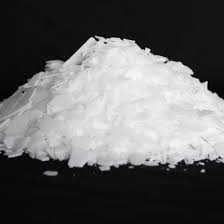Innovations in Wax and Paraffin Products
Originating with natural waxes in ancient times, wax and paraffin products found early uses in lighting and waterproofing. The Industrial Revolution marked a significant leap with the introduction of paraffin wax and later wax innovation, revolutionizing candle-making and expanding into diverse applications like packaging and insulation.
The 20th century brought synthetic waxes and specialty blends, adapting to the demands of various industries. Today’s focus on sustainability has led to eco-friendly alternatives, reflecting a commitment to balancing performance with environmental responsibility. This continuous wax innovation showcases wax’s versatility and enduring importance in numerous applications.
Recent Technological Advancements
Recent years have seen significant strides in wax innovation. Innovations have not only enhanced product quality but also steered the industry towards a more sustainable and environmentally conscious direction. As you explore these advancements, you will discover how they impact both the market and the environment.
- Nano-enhanced waxes
- Biodegradable waxes
- Synthetic wax formulations
- 3D printing with wax
- Smart waxes
- High-Performance industrial coatings
- Energy storage waxes
- Wax emulsions in textiles
New Industrial Wax Applications
The versatility of wax and paraffin products has allowed them to permeate various industries. Each leverags these materials’ unique properties to enhance product quality and functionality.
Cosmetics and Personal Care
In the cosmetics industry, wax innovation has led to the development of advanced formulations. Paraffin wax, known for its protective properties, is now a staple in moisturizers and lip balms, providing a barrier that locks in moisture. Additionally, recent advancements have led to the creation of cosmetic wax innovations like high-performance emulsifiers and texture enhancers in makeup, improving wearability and aesthetic appeal.
Pharmaceuticals
The pharmaceutical industry has seen a significant impact from wax innovation technology. Waxes are used in coating medications to control release times, enhancing the efficacy of drugs. They also play a crucial role in tablet formulations, aiding in the compression and stability of the pills. Pharmaceutical wax uses extend to ointments and creams, where they provide consistency and support active ingredient delivery.
Wax and Paraffin in Food Industry
Food grade wax has revolutionized packaging and preservation. These waxes are applied to fruits and vegetables to extend shelf life by retaining moisture and preventing spoilage. They are also used in coating cheese, protecting it from mold and bacteria while maintaining its flavor and texture. In confectionery, waxes provide a glossy finish to candies and chocolates, enhancing their visual appeal.
Industrial and Manufacturing
Wax innovation provides protective coatings for various products. Some of these product groups are automotive parts and electronic components. Waxes offer durability and resistance against moisture, corrosion, and other environmental factors. The emergence of wax in 3D printing has opened up new possibilities in manufacturing, where wax models are used for precision casting in industries like aerospace and jewelry.
Sustainable and Innovative Solutions
The drive for sustainability has led to eco-friendly wax innovation products. These innovations include biodegradable waxes used in packaging, aligning with environmental objectives while maintaining functional integrity. Additionally, the integration of nanotechnology in wax technology is paving the way for enhanced characteristics such as improved strength and thermal stability.
The Role of Nanotechnology
Nanotechnology has revolutionized the field of wax innovation. It significantly enhances the properties and applications of wax products. By incorporating nanoparticles, nanotechnology has improved the strength, thermal stability, and versatility of waxes which lead to advanced applications in industrial coatings, cosmetics, and pharmaceuticals.
This integration has not only enhanced performance but also contributed to sustainability, aligning with the demand for eco-friendly solutions. Despite challenges in scalability and cost, the ongoing development in nanotechnology promises further groundbreaking advancements, potentially transforming the wax and paraffin industry and expanding its possibilities to new horizons.
Wax and Paraffin Market Trends and Consumer Demands
The wax and paraffin industry is currently experiencing significant shifts in market trends and consumer demands. A growing emphasis on sustainability is driving the demand for eco-friendly wax products and sustainable paraffin alternatives. Consumers and industries alike are increasingly seeking biodegradable and naturally sourced waxes, reflecting a broader environmental consciousness.
Additionally, technological advancements, particularly in areas like 3D printing and advanced coatings, are expanding the applications for wax innovation products. This has led to a surge in demand for specialized waxes that cater to specific industrial needs. The market is also witnessing a rise in consumer preference for quality and performance, influencing the development of advanced wax formulations and innovative product solutions.
Challenges in Wax and Paraffin Innovation
- Environmental Impact: One of the primary challenges lies in minimizing the environmental footprint of wax production, especially concerning non-renewable sources like paraffin. The industry is tasked with finding a balance between functionality and sustainability.
- Cost and Scalability: Wax innovation, especially those involving advanced technologies like nanotechnology in wax products, often come with higher costs and scalability issues. Making these innovations economically viable and accessible on a large scale remains a challenge.
- Regulatory Hurdles: As with many industrial products, waxes face strict regulatory scrutiny, especially in food-grade and pharmaceutical applications. Adhering to these regulations while wax innovation can be complex.
- Technical Limitations: Despite advancements, there are still technical limitations in fully harnessing the potential of waxes, particularly in creating formulations that meet specific industry needs without compromising on quality or performance.
Future Outlook
- Sustainable and Eco-Friendly Advances: The trend towards sustainable paraffin and biodegradable wax is expected to continue. Research is increasingly focusing on eco-friendly wax products that do not sacrifice performance for environmental friendliness.
- Expansion in Diverse Industries: Wax innovation is not limited to traditional sectors. The future may see an expansion of wax applications in areas like renewable energy, biotechnology, and advanced electronics.
- Technological Integration: The integration of technologies like AI and machine learning could revolutionize wax production and application, leading to more efficient processes and customized product formulations.
- Consumer-Driven Innovation: As consumer awareness and demand evolve, the wax and paraffin industry will likely see a shift towards products that are not only high-performing but also align with ethical and environmental standards.




